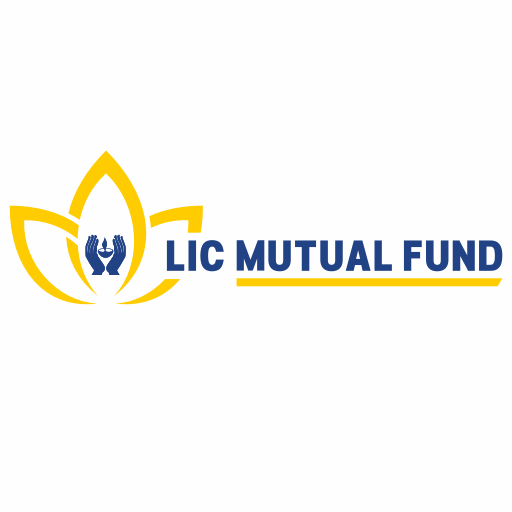As you enter your 30s, you have a unique opportunity to take control of your financial future through investing. This crucial decade marks a pivotal time when financial planning and wealth-building become increasingly important. Contrary to common misconceptions, age 30 is not too late to start investing. It presents a unique advantage: time. In this comprehensive guide to investing in your 30s, we will delve into the significance of investing in your 30s, detailed steps to kickstart your investment journey, suitable investment options, and the essential strategies to build substantial wealth in your 30s. Don’t miss out on the guide to investing in your 30s that can shape your financial prosperity for years to come. With this guide to investing in your 30s, you can pave the way for a secure financial future.
The Power of Investing in Your 30s
If you want to secure your financial future, now is the time, in your 30s. At this point in their lives, many people have established themselves economically, having found secure employment and sometimes benefiting from wage rises. The time it takes for compound interest to work for you increases exponentially the earlier in life you begin investing. If you start investing actively while you’re in your thirties, you may put yourself on track to achieve your financial goals in the future and gain financial independence.
Assess Your Financial Standing
Before diving into the world of investments, take a comprehensive look at your financial situation. Evaluate your income sources, monthly expenses, outstanding debts, and savings. Understanding your financial standing will help determine how much you can allocate to investments without compromising your essential needs. This evaluation will also highlight areas for improvement and potential opportunities to increase your savings rate.
Define Clear Financial Goals
Setting well-defined financial goals is fundamental to a successful investment journey. Take the time to envision where you want to be financially in the short-term, medium-term, and long-term. Whether you aspire to buy a home, fund your children’s education, retire comfortably, or achieve other milestones, outlining your objectives will serve as a roadmap for your investment strategy. Establishing specific, measurable, attainable, relevant, and time-bound (SMART) goals will keep you focused and motivated.
Create an Emergency Fund
Establishing a solid emergency reserve should be the first step in any comprehensive financial strategy. Put away at least three to six months’ worth of spending in a liquid investment or high-yield savings account. This cushion will keep you afloat during times of emergency or unemployment while still allowing your assets to grow unimpeded. You can rest easy and face any unforeseen financial obstacles with confidence if you set aside money in an emergency fund.
Pay Off High-Interest Debts
Having a lot of debt might slow down your financial progress significantly. If you want to relieve some financial pressure and have more money available for investments, you should prioritise paying off high-interest obligations like credit card bills and personal loans. Reducing or eliminating your high-interest debt will positively affect your finances in more ways than one.
Embrace Employer Benefits
Take full advantage of any 401(k) or other employer-sponsored retirement savings plan offered, particularly if the company will match your contributions. Employer contributions that are matched are effectively free money that may help your savings increase. Maximise your contributions to take full advantage of the company match since this is a great way to speed up your path to financial security. In addition, the tax benefits associated with employer-sponsored retirement plans may help you maximise your investment results.
Open a Retirement Account
Investing in retirement accounts, such as Individual Retirement Accounts (IRAs) or Roth IRAs, can offer substantial tax advantages. Contributions to traditional IRAs are tax-deductible, potentially lowering your taxable income, while Roth IRAs allow tax-free withdrawals in retirement. Regular contributions to these accounts allow your money to grow tax-deferred or tax-free, providing a solid foundation for a secure retirement. Additionally, consider using automatic contributions to ensure consistent investments over time.
Diversify Your Portfolio
One of the most important rules of investing is diversification. Diversify your holdings across equities, bonds, real estate, and other investment options. Risks may be reduced, and investment resilience can be maintained by diversifying your portfolio. To further diversify your portfolio and take advantage of global growth prospects, you may want to consider investing in local and overseas assets.
Educate Yourself Continuously
Investing is dynamic, and staying informed is crucial for making informed decisions. Continuously educate yourself about investment strategies, market trends, and personal finance to empower yourself as an investor. Read books, attend workshops, follow financial news, and seek advice from reputable financial advisors. Understanding the intricacies of investing will enable you to make confident and well-informed decisions that align with your economic aspirations.
Suitable Investment Options for Your 30s:
- Stock Market: Buying individual stocks or an index fund that tracks the stock market may provide great long-term gain potential but with more volatility. Think about putting your money into businesses that can sustain growth over time and have solid foundations.
- Bonds: Bonds are a safer investment choice that can be relied on to provide a regular income. They might serve as a nice counterweight to the riskier companies in your portfolio. A wide variety of bonds are available, including those that the government, municipalities, and private businesses issue.
- Real Estate: Rental property ownership and investment trust (REIT) investing are two ways to profit from real estate’s potential for passive income and capital gain. Buying a property might help you diversify your holdings and protect your wealth from inflation.
- Retirement Accounts: Use tax-advantaged retirement plans like 401(k)s and IRAs to their maximum potential so that you may retire with a comfortable nest egg. Your retirement savings will grow faster if you consistently put money into these accounts.
- Mutual Funds: Mutual funds are investment vehicles that aggregate capital from several participants to create a diversified portfolio, making them a viable choice for those new to investing. It is advisable to consider actively and passively managed index funds to align with one’s investing preferences.
- Index Funds: Index funds are financial instruments that function similarly to mutual funds. They are designed to replicate the performance of particular market indexes, providing investors with wide-ranging exposure to the market. One notable advantage of index funds is their comparatively reduced costs. Investing in index funds is a cost-efficient strategy for portfolio diversification across many industries and asset classes.
- Robo-Advisors: Robo-advisors enable automated and cost-effective investment management, making it a handy alternative for passive investors. Robo-advisors use algorithms to construct and oversee a diverse portfolio customised to align with an individual’s risk tolerance and financial goals.
Conclusion
Investing in your 30s might be a game-changer in protecting your financial future. You can confidently navigate the world of investing by analysing your financial situation, defining clear objectives, and diversifying your investment portfolio. The guide to investing in your 30s underlines the importance of time and compound interest in growing your money and ensuring a bright future. Continue to educate yourself on investments and market trends so that you may make educated choices that match your financial goals. The guide to investing in your 30s reminds you that taking the first step towards economic empowerment begins in your 30s. As you proceed along this road, assess and change your investing plan regularly to remain on track and reach your financial goals. With hard work and discipline, you may amass large sums of money and enjoy the rewards of financial independence in the years ahead.




